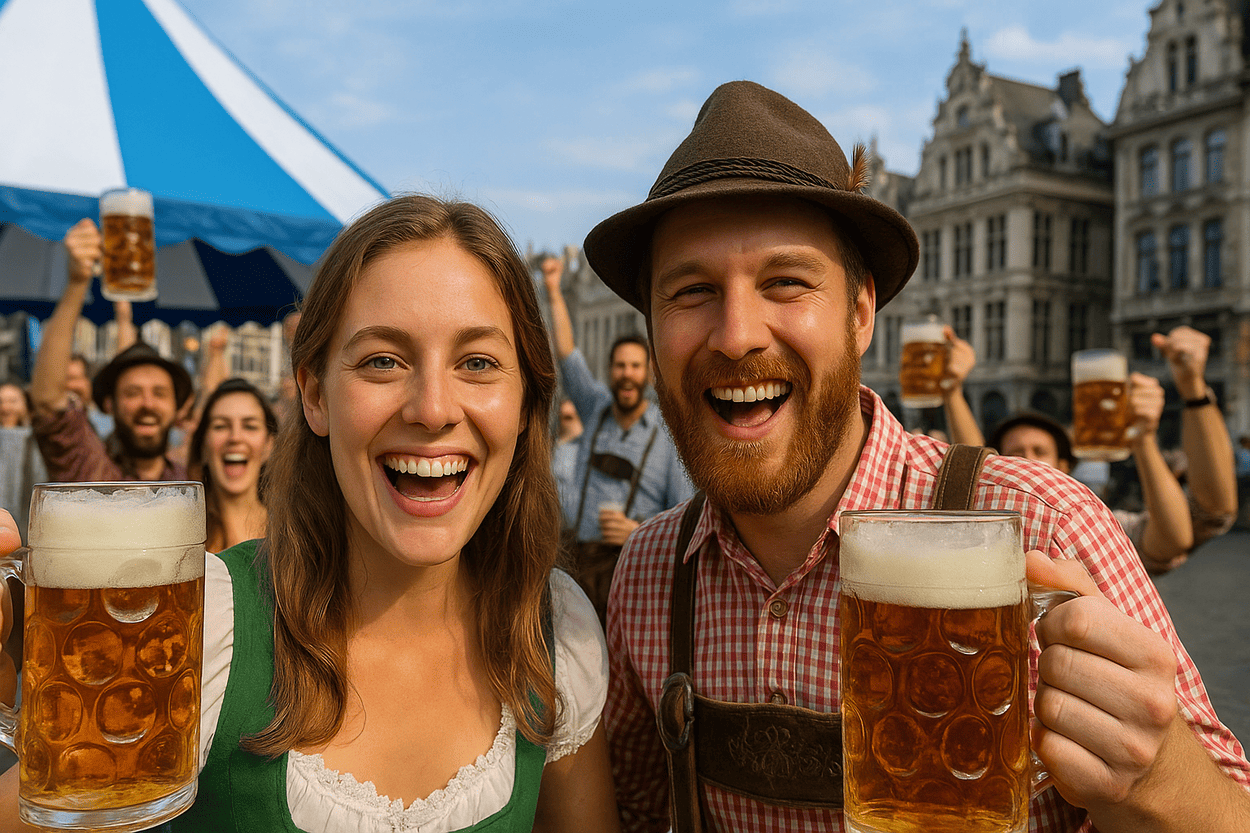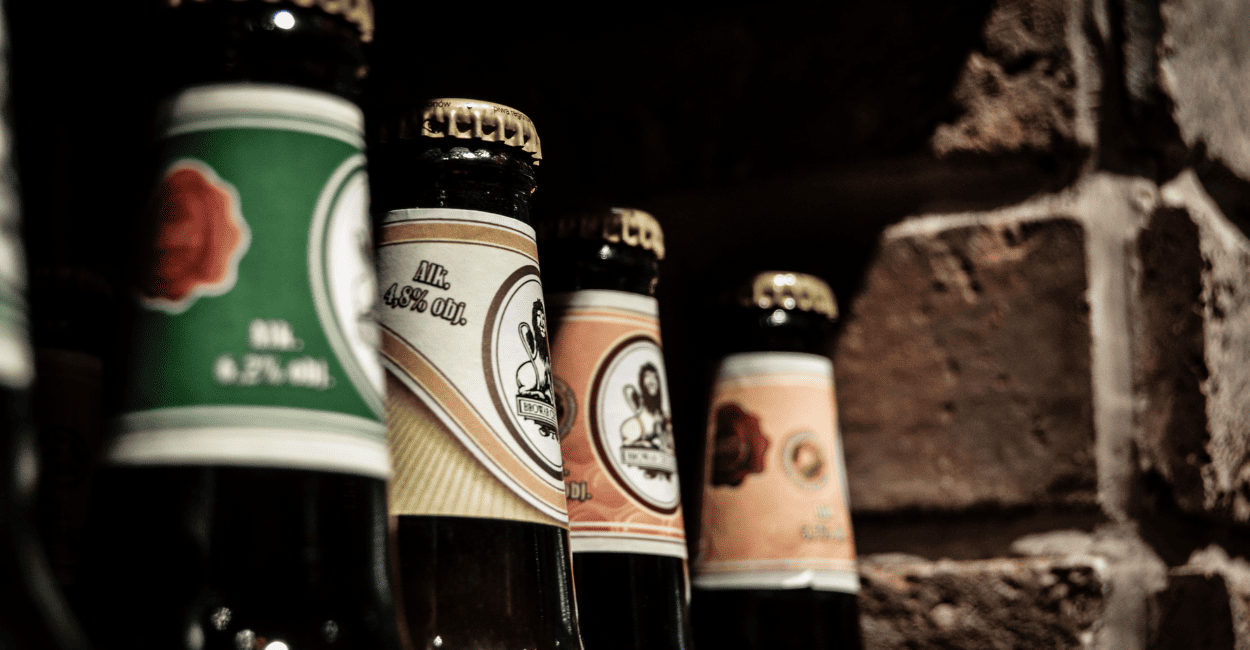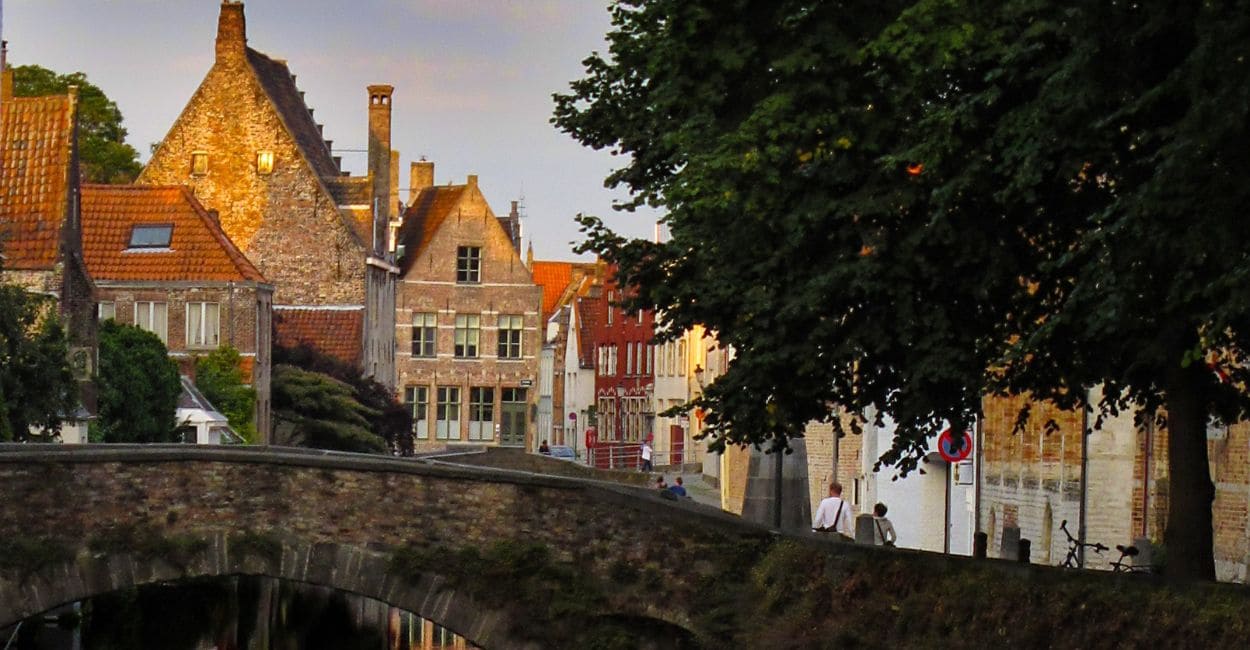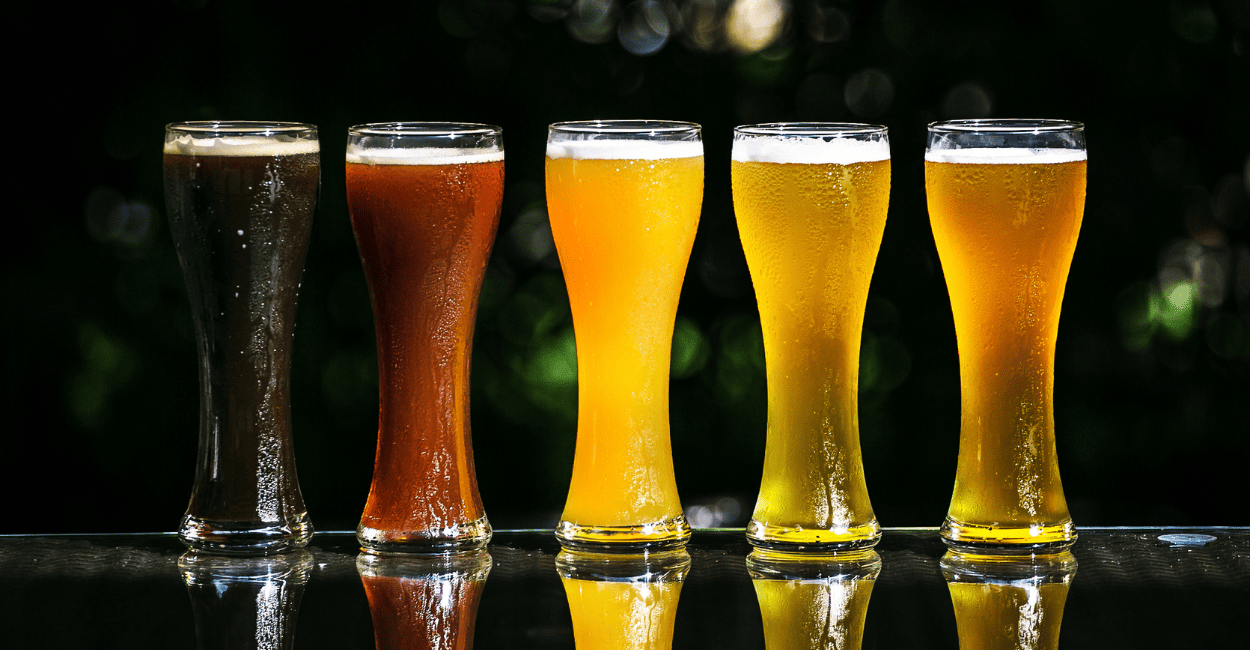What to Do in Bruges: Complete Guide for 1 Day or More
If you’re wondering what to do in Bruges, know that this Belgian city is a true medieval treasure, with its picturesque canals, charming architecture, and fairy-tale atmosphere. Located in the Flanders region, Bruges combines history, romance, and culture around every corner, making it perfect for both day trips and longer itineraries.
In this complete guide, you’ll find detailed suggestions to make the most of your visit. From the main tourist attractions to off-the-beaten-path sights, as well as practical tips for getting around, enjoying local cuisine, and exploring Bruges’ famous canals.
What to Do in Bruges on Your First Day?
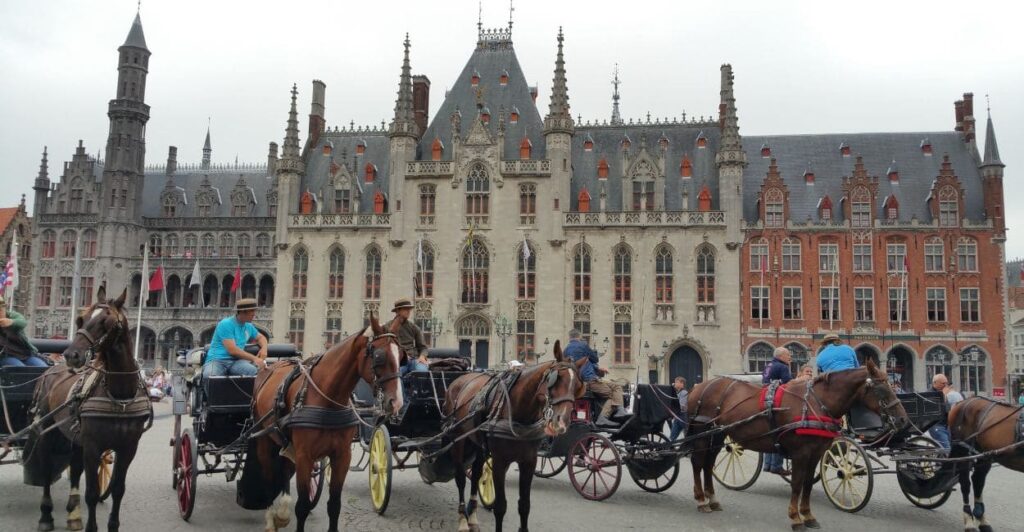
On your first day, you can take in all of Bruges’ medieval beauty on foot and along the canals.
1. Explore Grote Markt Square and Its Medieval Architecture
Grote Markt is the city’s central square and one of the most photographed spots in Bruges. Surrounded by colorful guild houses and the imposing Belfry, the square is home to cafés, horse-drawn carriages, markets, and tourists from all over the world. Be sure to visit the Provinciaal Hof, a fascinating neo-Gothic building, and take in the lively local atmosphere.
2. Climb the Belfry Tower to See the City from Above
The Belfry is an 83-meter-tall tower with 366 steps to the top. The climb can be tiring, but it’s rewarded with one of the most impressive views in Belgium. From above, you can see the full stretch of the canals, church towers, and the symmetry of the historic streets. Tip: arrive early to avoid long lines.
3. Stroll through Minnewater Park and Visit the Lake of Love
Known for its romantic charm, Minnewater Park is home to the famous Lake of Love and the Lovers’ Bridge. It’s a peaceful retreat, surrounded by trees and swans, perfect for quiet moments or an outdoor picnic. Benches around the lake provide ideal spots to relax and enjoy the scenery.
4. Visit the Basilica of the Holy Blood
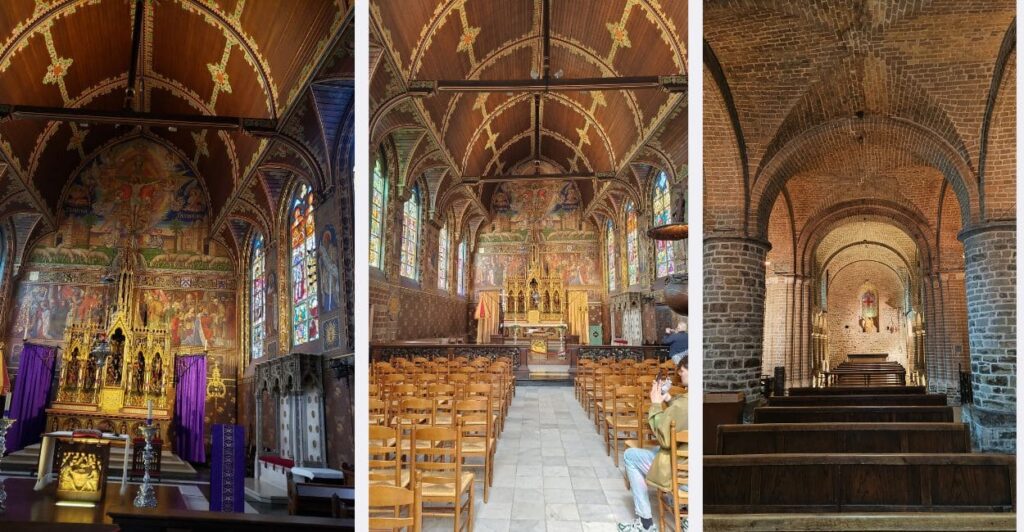
Located in Burg Square, this Gothic basilica is impressive both inside and out. Inside, there is a chapel housing a relic that, according to tradition, contains drops of Jesus’ blood. The interior decoration blends Romanesque and Baroque elements, featuring beautiful stained glass windows and an antique organ that is still in use.
5. Take a Boat Tour Through Bruges’ Canals
A boat tour through the canals is a must in Bruges. Boats depart from spots like Rozenhoedkaai and Huidenvettersplein, passing under low bridges and alongside historic buildings reflected in the water. Guides share stories and interesting facts about the city, making the ride both engaging and culturally enriching.
6. Visit the Gruuthuse Museum and the Church of Our Lady
The Gruuthuse Museum tells the story of the medieval Flemish nobility and houses a rich collection of art, furniture, tapestries, and everyday objects. Next door is the Church of Our Lady in Bruges, home to Michelangelo’s sculpture “Madonna and Child.” This is the only work by the artist outside of Italy during his lifetime and can be admired up close.
What Are the Best Museums to Visit in Bruges?
Groeninge Museum: Flemish and Renaissance Art
With works by Jan van Eyck, Hans Memling, and other Flemish masters, the Groeninge Museum is a key reference for 15th- and 16th-century art. Its collection of religious paintings and portraits offers a deep dive into the region’s artistic past.
Torture Museum: Dark and Curious History
Located in one of Europe’s oldest prisons, this museum showcases medieval artifacts and instruments used for punishments. The visit is striking, with a dark atmosphere that immerses visitors in the shadowy side of the Middle Ages.
Arentshuis: Contemporary Art and Local Exhibitions
Focusing on modern art and contemporary Belgian artists, Arentshuis features temporary exhibitions, collections by Frank Brangwyn, and pleasant canal views. It offers a modern contrast to Flemish tradition.
Bruges Beyond the Basics: Off-the-Beaten-Path Attractions
St. John’s Windmills: Preserved Heritage
Located near the old city walls, the windmills—especially Sint-Janshuismolen—are open to visitors and offer a peaceful view of a less-explored side of Bruges. They’re perfect for walks or photos.
Sint-Anna District: Local Charm and Fewer Tourists
This residential area features small churches, quiet streets, and an authentic atmosphere. It’s perfect for those looking to explore family-run cafés and experience the daily life of local residents.
Beer Wall and Historic Bars of Bruges
The Beer Wall is more than just a bar—it’s an experience. With hundreds of bottles on display and a terrace overlooking the canal, it also features a gift shop and Belgian chocolates.
How to Get to and Get Around Bruges
Coming from Brussels by Train or Bus
Trains depart hourly from Brussels Central and reach Bruges in about an hour. It’s also possible to travel by bus (more economical but slower). The train station is a 15-minute walk from the historic center.
Local Transportation: Is It Easy to Explore on Foot?
Yes, Bruges is a small city, perfect for walking. Many visitors explore all the sights on foot without needing additional transportation. Bicycles are also a great option.
Where to Park in Bruges if You’re Driving?
It is recommended to use parking lots such as Parking Zand, near the city center. Driving through the historic center is not advised due to narrow streets and heavy pedestrian traffic.
Where to Stay in Bruges: Best Areas and Hotels
Historic Center: Prime Location
Staying in the center allows you to do everything on foot. Hotels like Martin’s Brugge, Hotel Aragon, and Dukes’ Palace offer comfort and an excellent location.
Minnewater and Surroundings: Tranquility and Charm
Ideal for those seeking peace and proximity to parks. Hotels like Canalview Ter Reien and Monsieur Maurice are great options.
Boutique Hotels vs. Budget Options
Bruges offers charming hotels, such as Hotel Heritage and Pand Hotel, as well as budget hostels like St. Christopher’s Inn. There are options for every budget.
Is Bruges Safe? How Much Does It Cost to Visit?
Average Cost of Meals, Attractions, and Transportation
On average, lunch costs €15, a full dinner €25, boat tours €12, and museums range from €8 to €15. Bruges isn’t cheap, but it offers good infrastructure and safety.
Tips to Save Money Without Missing Out on Experiences
Opt for daily menus, join free tours, buy combined museum passes, and use public transportation for longer trips.
Precautions and Useful Information for Travelers
The city is safe, with low crime rates. Bring an umbrella and wear comfortable shoes. Credit cards are widely accepted.
Where to Eat and Drink Well in Bruges?
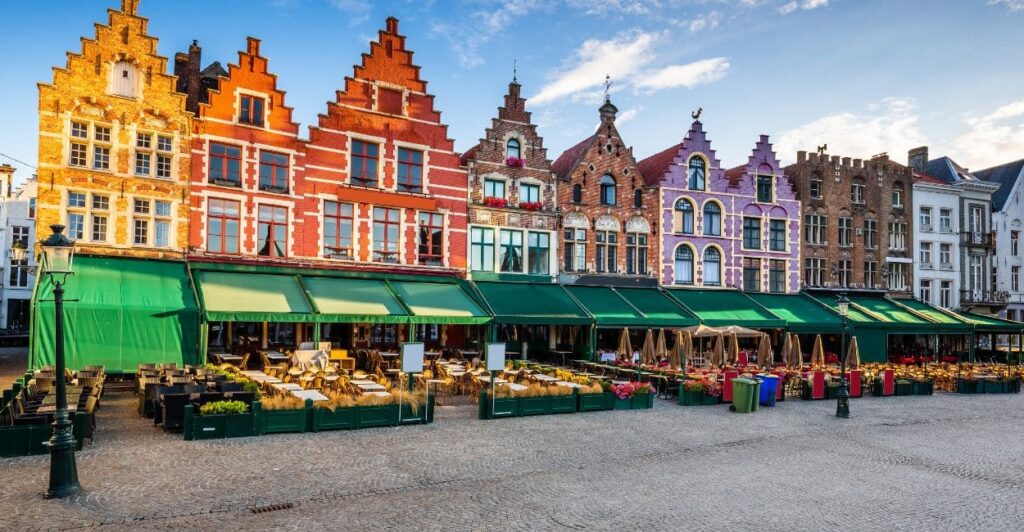
Tips for Typical Belgian Restaurants
Besides L’Estaminet, famous for its baked spaghetti, also worth visiting are:
-
- De Vlaamsche Pot: specializing in traditional Flemish dishes, such as house-style rabbit and stoofvlees (Flemish beef stew).
-
- Chez Albert: perfect for tasting authentic Belgian waffles with a variety of toppings.
-
- Poules Moules: A traditional spot for those who want to try moules-frites (mussels with fries).
Craft breweries and bars with canal views
-
- 2be Beer Wall: A bar with hundreds of beer labels and panoramic canal views.
-
- Le Trappiste: A underground bar in a 14th-century cellar, offering over 100 types of beer.
-
- Cambrinus: Classic pub with a medieval atmosphere and a menu featuring over 400 Belgian beer labels.
-
- Bruges Beer Experience: Interactive museum with tastings and plenty of information about the local beer culture.
Best places to taste artisanal Belgian chocolate
-
- The Chocolate Line: From the renowned chocolatier Dominique Persoone, offering creative flavors such as chocolate with bacon
-
- Choco-Story: In addition to tasting, you learn the entire history of Belgian chocolate.
-
- Dumon Chocolatier: One of the city’s most traditional brands, with charming shops and handcrafted, hand-packed products.
What to do in Bruges with children or as a couple?
Romantic activities along the canals and in the parks
Couples can enjoy sunset boat rides, candlelit dinners, and evening strolls. Minnewater Park is perfect for romantic moments.
Options for families with young children
Children love the Frietmuseum (fries), Choco-Story (chocolate), and the boat ride. There are also playgrounds and green areas to relax.
Itinerary in Bruges: what to do in 2 days or more?
Perfect 2-Day Itinerary in Bruges
Day 1: Grote Markt, Belfry, canals, main museums, and the basilica.
Day 2: Minnewater, windmills, Sint-Anna neighborhood, chocolate tasting, and beers.
Day trip to nearby cities (e.g., Ghent, Brussels)
Ghent is just a 30-minute train ride away and is vibrant, with castles and street art. Brussels, the capital of Belgium, blends history and modernity. Both are excellent additions to your itinerary.
Frequently Asked Questions About Things to Do in Bruges
Is Bruges an expensive destination?
Yes, but you can save money with planning and smart choices.
How many days are ideal to visit Bruges?
At least 2 days are recommended to fully enjoy the main attractions and explore at a relaxed pace.
What’s the best time to visit Bruges?
Between April and June or September and October, when the weather is pleasant and there are fewer tourists.
Do I need to buy tickets in advance for attractions?
Yes, especially for the Belfry, boat tours, and popular museums. This helps you avoid lines and secure your preferred time slots.
🌍 Want to enjoy the best of Bruges without worrying about a thing?
Book your guided tours, tickets, and experiences now with safety and ease:




